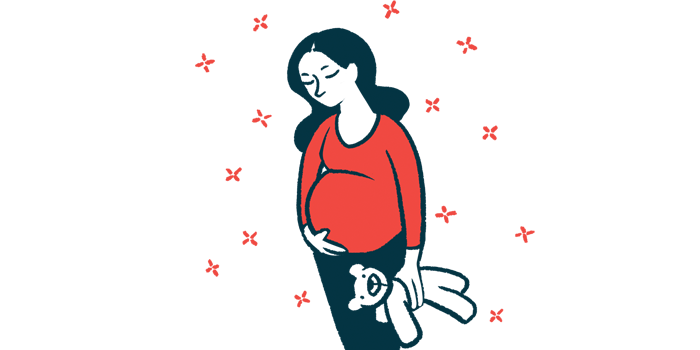Treatments help avoid pregnancy with Cushing’s complications
Report: Early diagnosis, intervention can improve maternal and fetal outcomes
Written by |

Individualized treatments helped two women and their babies avoid complications of Cushing’s syndrome during pregnancy, according to a case report.
“Careful clinical observation during pregnancy and after delivery is necessary to initiate appropriate treatment,” the researchers wrote.
Both cases were detailed in the study, “Diagnosis and Management of Cushing’s Syndrome During Pregnancy: Two Cases Report and Literature Review,” published in Clinical Case Reports.
Endogenous Cushing’s syndrome occurs when the adrenal glands produce too much cortisol, leading to symptoms such as weight gain, emotional disturbances, and skin changes. In these cases, overproducing cortisol is typically driven by tumors that may form in the adrenal glands, the pituitary gland (as in the case of Cushing’s disease), or elsewhere in the body. When Cushing’s is related to a tumor, surgery to remove it is usually the preferred treatment.
Cushing’s can also occur during pregnancy, but “normal physiological changes during pregnancy can mask the symptoms of [Cushing’s syndrome], making early diagnosis and treatment challenging,” according to the researchers. Because of this, cases of Cushing’s diagnosed during pregnancy are relatively rare.
In these cases, excess cortisol can cause problems for mothers and fetuses alike. Prompt treatment, which requires recognizing Cushing’s symptoms early, can improve maternal and fetal outcomes. However, pharmacological therapies pose their own risks to a pregnancy, making surgery the recommended first-line treatment when possible, the researchers said.
Individual treatment needs
Here, the first woman, 28, developed Cushing’s during pregnancy was admitted to the hospital at 40 weeks after signs of fetal distress. During her pregnancy, she’d experienced personality changes, high blood sugar, and high blood pressure. She delivered a baby girl, but the child showed signs of respiratory problems at birth. The woman also lost blood following her delivery and had severely low potassium.
She also showed features consistent with Cushing’s, including a moon-shaped face and blue-purple bruising on her limbs. She also had high cortisol levels and a CT scan revealed a tumor in her right adrenal gland.
The woman was given medications to control her blood pressure and potassium chloride supplements to increase her blood potassium levels. She had surgery to remove the adrenal tumor, followed by hydrocortisone replacement therapy to maintain her cortisol levels in the normal range.
“At the 13-month follow-up, the patient’s blood [sugar], blood pressure, and psychological state were all normal, and her daughter’s growth and development were consistent with peers,” the researchers wrote.
The second woman, 33, was first seen at the hospital earlier in her pregnancy, at 20 weeks. Like the first woman, she had a moon-shaped face and other features, including skin changes, that were indicative of Cushing’s. Blood tests showed high cortisol and an MRI scan revealed the presence of a tumor on her left adrenal gland.
Along with medications to control her blood pressure and maintain potassium levels within an acceptable range, she was given insulin to control her blood sugar. The woman had a minimally invasive surgery to remove the tumor and she started hydrocortisone replacement therapy.
After a premature membrane rupture, the woman gave birth via cesarean section to a healthy baby girl. Her blood pressure, blood sugar, and potassium levels were within normal ranges about a month later.
This two cases illustrate how timely, tailored treatment can facilitate healthy pregnancy and postpartum recovery in Cushing’s.
“Obstetricians and endocrinologists should heighten their awareness of pregnancy-associated [Cushing’s syndrome], and early diagnosis and intervention can significantly improve maternal and fetal outcomes,” the researchers wrote.






